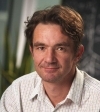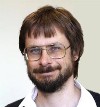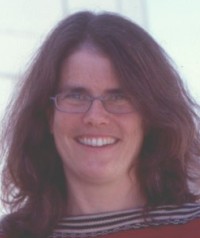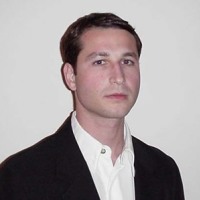Invited Speakers
| PLEASE NOTE: Replace the string " AT " by "@" when using the email addresses below (an effort to avoid extra SPAM sent to those addresses). Example: "smith AT myuniversity.com" becomes "smith@myuniversity.com" |
 |
Felix Aharonian Talk: The fascinating TeV Sky |
||
| Abstract: I review the status of high energy gamma-ray astronomy, highlight the achievements of the field with an emphasis on the astrophysical implication of recent discoveries. I also will briefly discuss the scientific rationale and potential of the field in the context of future generation of gamma-ray detectors. | |||
| Download talk: |
|||
 |
Jim Bergquist Talk: Single-atom optical clocks and fundamental constants Abstract: |
||
| Download talk: |
|||
 |
Demetrios Christodoulou Talk: The formation of black holes by the focusing of incoming gravitational waves |
||
| Abstract: In 1965 Penrose introduced the fundamental concept of a trapped surface, on the basis of which he proved a theorem which asserts that a spacetime containing such a surface must come to an end. The presence of a trapped surface implies, moreover, that there is a region of spacetime, the black hole, which is inaccessible to observation from infinity. A major challenge since that time has been to find out how trapped surfaces actually form, by analyzing the dynamics of gravitational collapse. I have recently published a monograph which achieves this aim by establishing the formation of trapped surfaces in pure general relativity through the focusing of incoming gravitational waves. The theorems proved in this monograph constitute the first foray into the long-time dynamics of general relativity in the large, that is, when the initial data are no longer confined to a suitable neighborhood of trivial data. | |||
| Download talk: |
|||
 |
Eugene Churazov Talk: Galaxy clusters and their central supermassive black holes |
||
| Abstract: Most of baryons in galaxy clusters are in the form of hot, X-ray emitting gas, sitting in a gravitational potential well, formed by dark matter. Any low entropy gas, which appears in a cluster due to radiative cooling, will sink to the bottom of the well, fragment and form starts at a very high rate - in strong contradiction with observations. Instead, a supermassive black hole, lurking at the center of the cluster, acts as a powerful sources of energy for the hot gas, capable to offset gas cooling losses. The gas and the supermassive black hole form a self-regulated system where heating and cooling balance each other. | |||
| Download talk: |
|||
 |
Thibault Damour Talk: "Analytical Relativity" of Black Holes |
||
| Abstract: It might a priori seem that the last few orbits, and the coalescence, of a binary black hole are beyond the reach of analytical methods, and can only be described by numerical relativity. We show, however, that a special analytical method ("Effective One Body" approach) can lead both to a physical understanding, and to an accurate description of the motion and radiation of coalescing binary black holes. This method combines, in a "resummed" way, the knowledge acquired both from perturbation calculations, and from numerical simulations. | |||
| Download talk: |
|||
 |
Massimo Della Valle Talk: Ground-based Observations of Gamma-ray Burst: latest Highlights from Large and Robotic Telescopes |
|
|
| Abstract: | |||
 |
Laurent Freidel Talk: Spin Foam models: models of quantum dynamical space time |
||
| Abstract: In this talk I will give an overview of spin foam models which describe the dynamics of quantum gravity in a background independent context. I will focus especially and the recent developments which concerns the construction of these models in 4 dimensional gravity and present some of the key results obtained in this context like the construction of the model, the proof of the semi-classical limit and the relationship with loop quantum gravity and SU(2) spin network states. | |||
| Download talk: |
|||
 |
Herbert W. Hamber Talk: Ultraviolet Divergences and Scale-Dependent Coupling in Quantum Gravity | ||
| Abstract: I will discuss how non-perturbative approaches to the problem of ultraviolet divergences in quantum gravity, similar in spirit and methods to what is done in the modern renormalization group treatment of non-abelian gauge theories, point to a possible weak scale dependence of Newton's constant at very large distances. I will then discuss ways by which such a scale dependence could in principle be verified observationally. | |||
| Download talk: |
|||
 |
Christine Jones Talk: Shocks and Cold Fronts in Clusters of Galaxies |
|||
| Abstract: Located at nodes of the cosmic web, clusters of galaxies are the largest collapsed structures in the Universe with total masses up to 1015 M_sun. Over 80% of their mass resides in the form of dark matter. The remaining mass is composed of baryons, about 85% of which is a diffuse, hot plasma that radiates primarily in X-rays. Clusters grow via accretion of dark and luminous matter along filaments and the merger of smaller clusters and groups. X-ray observations show that many present epoch clusters are indeed not relaxed systems, but are scarred by shock fronts and contact discontinuities ("cold fronts"). This talk will highlight results for the merging cluster A3667 in which a "cold front" and shock mark the boundary between the cluster and the merging subcluster and for the Virgo cluster in which a "cold front" shows the motion of the gas in the core while shocks result from the outburst of M87's supermassive black hole. | ||||
| Download talk: |
||||
 |
Michael Kramer Talk: Relativistic spin-precession in binary pulsars |
||
| Abstract: Thirty-five years after the discovery of the first binary pulsar and the immediate prediction of observable spin precession, the study of precession and gravitational spin-orbit coupling is a very active and successful research topic. After initial qualitative detections, spin precession has now been measured in an increasing sample of binary pulsars. First precise quantitative mesurements can be used to test theories of gravity, such as the effacement property of spinning bodies as predicted by general relativity. Moreover, the effects can also be used for astrophysical studies such as the tomography of pulsar radio beams. This talk will review the latest development, present the highlights of the obtained results and demonstrates the usefulness of spin precession in pulsars. | |||
| Download talk: |
|||
 |
Juan Maldacena Talk: Black holes as a source of information |
||
| Abstract: We will review the duality between gravity in negatively curved spacetimes and quantum field theories on the boundary. Black holes in these spacetimes represent finite temperature configurations for the theory on the boundary. The classical dynamics of these black holes can be used to get some insight into strongly coupled quantum systems. | |||
| Download talk: |
|||
 |
Dick Manchester Talk: Detection of Gravitational Waves with Pulsar Timing |
||
| Abstract: One of the major goals of current astrophysics is the detection and study of gravitational waves (GW). Millisecond pulsars are very precise clocks and the tiny period perturbations resulting from GW passing over the Earth and the pulsar can in principle be detected. Observations of just a few pulsars can only ever put a limit on the strength of GW in the Galaxy, but a positive detection can be made with observations of many pulsars spread across the celestial sphere, a so-called "Pulsar Timing Array" (PTA). PTAs are sensitive to GW with frequencies in the nHz range and hence are complementary to ground- and space-based laser-interferometer systems which are sensitive to GW at much higher frequencies. With current technology, PTAs have the potential to detect predicted levels of the stochastic GW background in the Galaxy in 5 - 10 years. Failure to detect this GW background will have a significant impact on merger models for the growth of galaxies and their central black holes and on models for cosmic-string formation in the early Universe. Besides the detection and study of GW, PTAs have the potential to establish a long-term standard of time which is more stable than current standards based on atomic clocks, to improve on current mass determinations for several planets and to detect previously unknown Solar-System objects. Current PTA projects, including the Parkes Pulsar Timing Array (PPTA), the US NANOGrav project and the European Pulsar Timing Array (EPTA) project, along with efforts to combine these into an International Pulsar Timing Array (IPTA), are described. Future prospects for PTA projects, especially in the SKA era, are discussed. | |||
| Download talk: |
|||
 |
Maxim Markevich Talk: Intergalactic shock fronts |
||
| Abstract: Shock fronts propagating in the hot plasma within galaxy clusters is a widely expected phenomenon, given that clusters form and grow by constantly accreting smaller subclusters and galaxy groups. However, these merger shock fronts have turned out to be difficult to detect -- to date, only 2 have been confidently identified by the Chandra X-ray observatory. I will show results on the shock fronts in the Bullet cluster (1E0657-56) and A520 and a candidate shock in A521. They offer unique insights into several interesting aspects of the cluster and dark matter physics. | |||
| Download talk: |
|||
 |
Yannick Mellier Talk: Weak gravitational lensing and cosmology | ||
| Abstract: Weak gravitational lensing by cosmic structures of the universe produces coherent shear fields that can be directly observed from the ellipticity of lensed galaxies. The statistical analysis of the shapes of lensed galaxies then reveals, almost directly, the properties of the projected (dark) matter power spectrum. Weak lensing can then be used to challenge theoretical models against the observed (dark) matter power spectrum. In this review, I will discuss what we learned from the Canada-France-Hawaii Telescope Legacy Survey and other weka lensing surveys about dark matter, dark energy, neutrinos and some modified gravity models. I will also discuss future prospects for the next generation surveys. | |||
| Download talk: |
|||
 |
Jean-Loup Puget Talk: Abstract: |
 |
Hernando Quevedo Talk: On the minimum size of astrophysical compact objects |
||
| Abstract: The stationary gravitational field of compact objects, in the context of Einstein's gravity, should be described by means of an exterior metric and an interior metric with an appropriate set of gravitational and electromagnetic multipole moments. We study a particular case of the Mashhoon-Quevedo family of asymptotically flat electrovacuum exact solutions, and show that, in the limiting case of a slowly rotating slightly deformed body, it coincides with the Hartle-Thorne metric which is endowed with an explicit exterior and an interior solution. This indicates that this particular Mashhoon-Quevedo metric is the exact solution for a compact object endowed with rotation and quadrupole moment. The limits on the maximum gravitational and electromagnetic binding energy of any physical source are consequently evaluated by determining the critical radius at which naked singularities and repulsive gravity occur. Evidence is presented for considering such a critical radius as determining the minimum size at which a physical solution can exist and be matched. | |||
| Download talk: |
|||
 |
David Reitze Talk: The emerging global network of gravitational wave detectors: LIGO and Virgo open a new window to the universe |
||
| Abstract: Gravitational wave astronomy greatly benefits from having a globally distributed interferometer network to provide detection confidence as well as to extract physical content (sky location and polarization) from the detected signals. Working together, the LIGO, Virgo, and GEO600 interferometers have jointly searched for galactic and extra-galactic gravitational wave sources. In this talk, I will review the status of the terrestrial gravitational wave detector network, highlight the major results of the recent LIGO S5 and Virgo VSR1 science runs, and discuss how the future ground-based gravitational wave detector network will evolve in the coming decade and beyond. | |||
| Download talk: |
|||
 |
Piero Rosati Talk: Resolving the Cosmic X-ray Background and Understanding Structure Formation with a new era of X-ray Surveys |
||
| Abstract: Deep surveys conducted with the Chandra and XMM-Newton X-ray observatories in the last eight years have allowed a leap forward in our understanding of the nature of the cosmic X-ray background (XRB), which has been resolved into several classes of sources. Intensive identification programs with multi-wavelength surveys (particularly with the Hubble and Spitzer Space Telescopes) and deep spectroscopy with 8-10m class telescopes have shown that most of these sources are Active Galactic Nuclei (AGN), many of which obscured, thus indicating that the XRB is largely due to accretion onto supermassive black holes (SMBHs) integrated over cosmic time. Observations and models clearly indicate that a significant fraction of this accretion power remains however absorbed, so that at energies exceeding 5 keV a significant fraction of the XRB is still unresolved and is attributed to the long sought population of Compton-thick AGN. In addition, recent studies have revealed an intimate physical connection between the growth of SMBHs and stellar spheroids, which makes star formation history and AGN activity also interconnected. Large, moderately deep X-ray surveys over the last decade have also changed our view on the evolution of galaxy clusters, which have been detected in X-ray out to redshift 1.5. Massive virialized structures have been discovered with their intra-cluster gas and galaxy populations in a surprisingly advanced evolutionary stage at these large (~9 Grs) look-back times. These observations set strong new constraints on structure formation and cosmological models. I will review these recent developments and discuss the prospects of the next generation of wide-field X-ray surveys which have the potential to shed light on a number of outstanding astrophysical and cosmological issues. | |||
| Download talk: |
|||
 |
Remo Ruffini Talk: Fundamental Physics from Black Holes, Neutron Stars and Gamma-Ray Bursts |
||
| Abstract: | |||
| Download talk: |
|||
 |
Ashoke Sen Talk: Black hole entropy in the extremal limit |
||
| Abstract: In this talk I shall review recent progress towards understanding the entropy of a black hole in the extremal limit via $AdS_2/CFT_1$ correspondence. | |||
| Download talk: |
|||
 |
David Wiltshire Talk: Dark energy from cosmic structure |
||
| Abstract: Below scales of about 100/h Mpc our universe displays a complex inhomogeneous structure dominated by voids, with clusters of galaxies in sheets and filaments. The coincidence that cosmic expansion appears to start accelerating at the epoch when such structures form has prompted a number of researchers to question whether dark energy is a signature of a failure of the standard cosmology to properly account, on average, for the distribution of matter we observe. Several ideas have been put forward, with intense debate and controversy. I will discuss the debate and the key issues which involve both the change to average cosmic evolution from backreaction, and the solution to the "fitting problem": How do our own observations relate to average quantities when the variance of local geometry becomes significant? I will suggest that a viable alternative to a smooth dark energy may exist purely in general relativity, and will discuss the observational signatures which will allow such a scenario to be tested in future and distinguished from a homogeneous isotropic cosmology with smooth dark energy. | |||
| Download talk: |
|||












